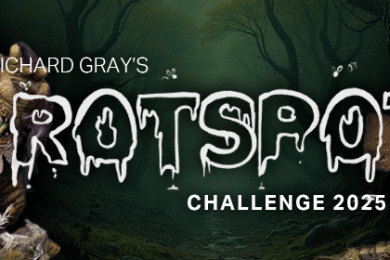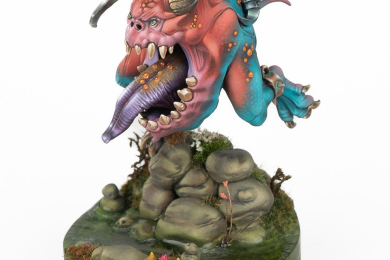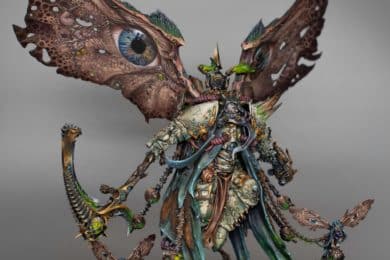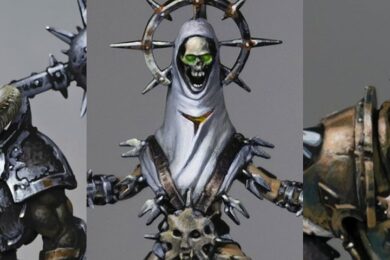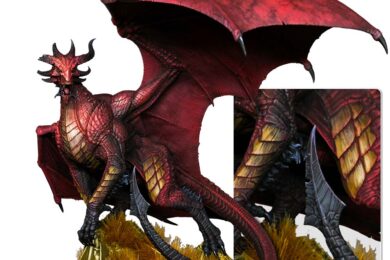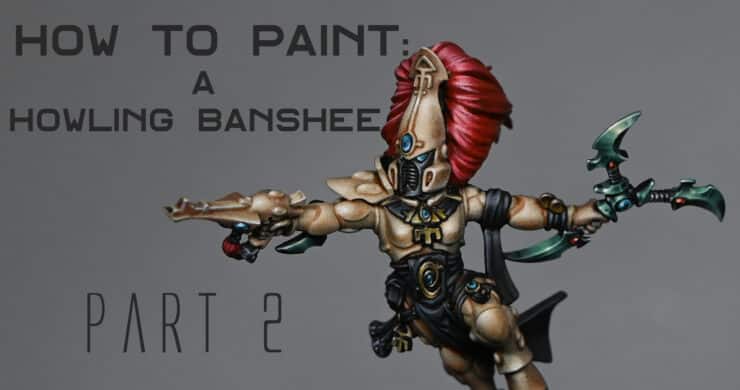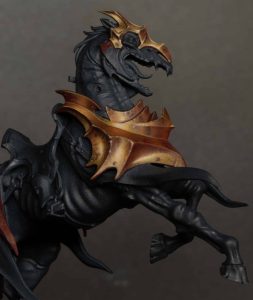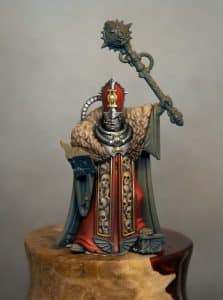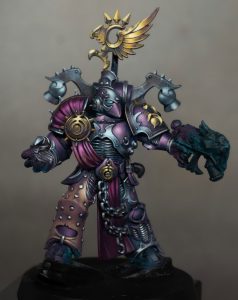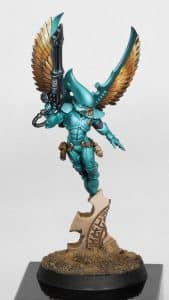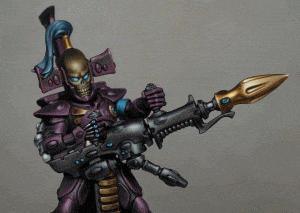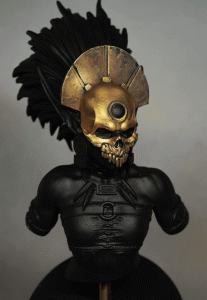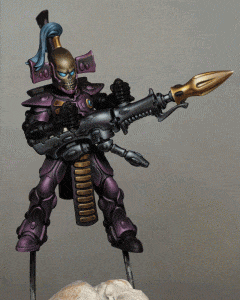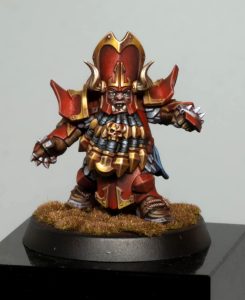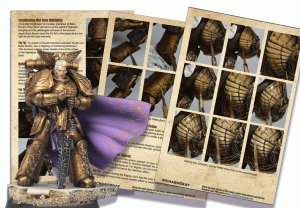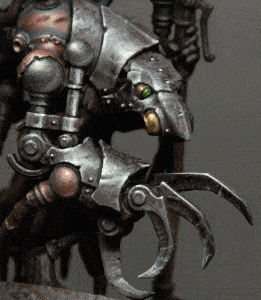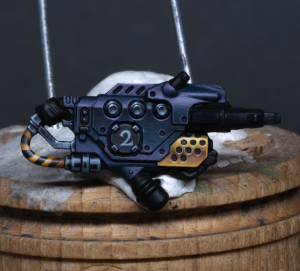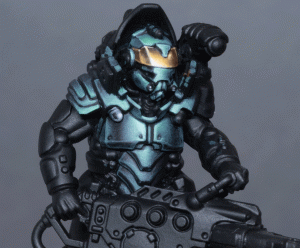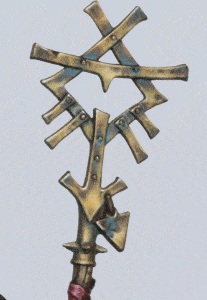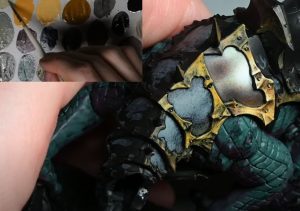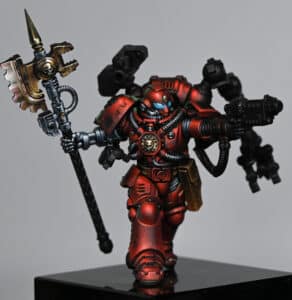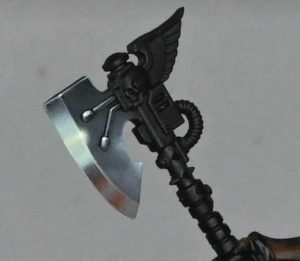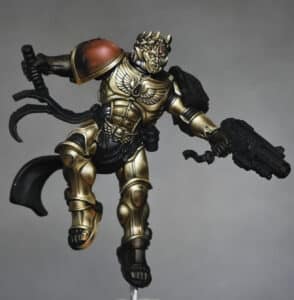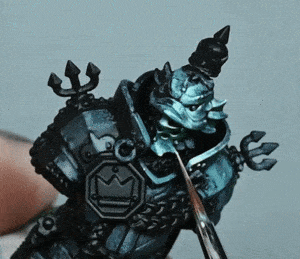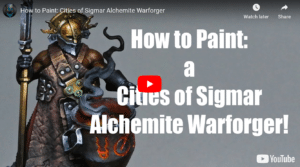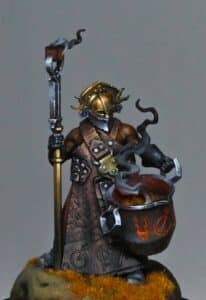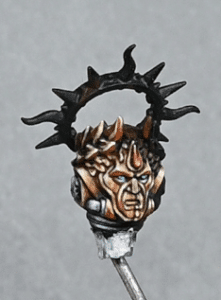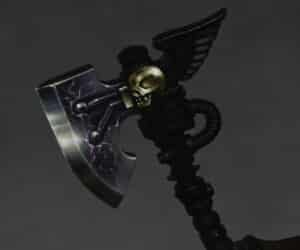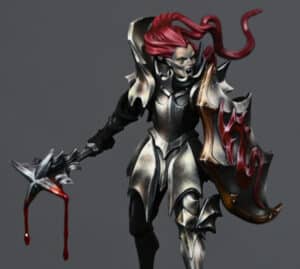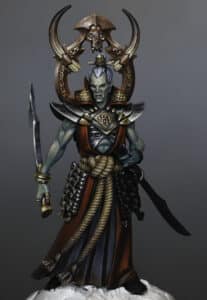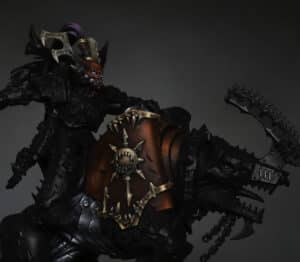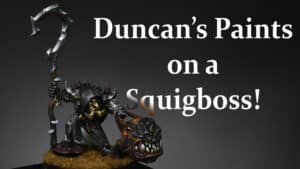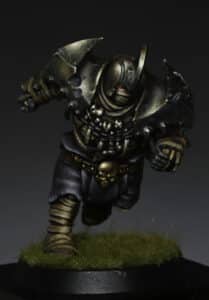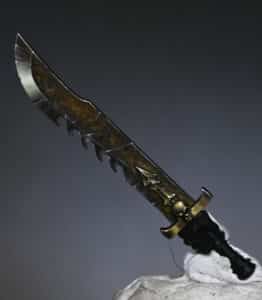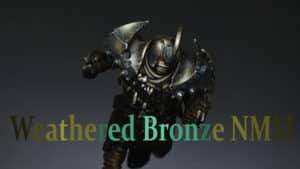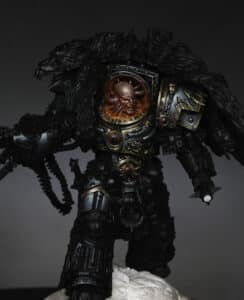This video shows how to paint an Aeldari Howling Banshee Triskele Weapon to a high level tabletop standard.
The Aeldari Howling Banshee’s power weapon (the ‘triskele’ weapon) will have a non-metallic, yet luminous green effect. This method involves intricate layering and stippling to simulate reflection. We’ll primarily utilise Cybrite Green from Games Workshop, blended with various quantities of black for shadows, and Vallejo’s Ice Yellow for the highlights.
Materials Needed
- Cybrite Green (Games Workshop)
- Black (Vallejo Model Colour)
- Ice Yellow (Vallejo)
- Evil Sunz Scarlet (Games Workshop)
- Wild Rider Red (Games Workshop)
- Fire Dragon Bright (Games Workshop)
- Morrow White (P3 or any alternative white)
- A fine brush
- A wet palette
Step-by-Step Tips and Guide – Green NMM
- Base Layer: Firstly, coat the triskele weapon in black, creating a pristine base.
- Green Layering:
- Blend Cybrite Green with a touch of black. Apply this darker green shade to parts of the triskele weaponless exposed to light.
- Incrementally integrate more black into the mixture for creating deeper shadows, ensuring smooth transitions.
- Highlight Application:
- Form lighter shades by mixing Cybrite Green with small increments of Ice Yellow. Gradually apply these on the triskele weapon’s raised and edge areas, depicting where light naturally strikes.
- Keep your paint mix slightly thinned for better control during layering. A recommended mix is two parts water to one part paint.
- Texture via Stippling:
- With the lighter green mixes, stipple the surface to generate a textured, reflective look. The density of the dots correlates with the opacity.
- Reflections Definition:
- Under a lamp, observe the natural light reflections on the blade. Mimic these on the blade’s upper portion using lighter green shades, ensuring they’re the most luminous parts.
- Finalising Highlights:
- Employ white or the palest green mix for the highest light points. Apply these sparingly as minute dots or slender lines to achieve a sparkling effect.
- Gemstone Painting:
- For red gems: Start with Evil Sunz Scarlet, augment with highlights using Wild Rider Red and Fire Dragon Bright, mainly on the gems’ lower areas. Cap off with an Ice Yellow or white dot atop each gem for reflection.
- For the blue gem: Adopt a similar approach, starting with Sotek Green and progressively incorporating white for highlights.
- Refinement and Adjustment:
- If needed, use glazes (diluted paint) to soften transitions or reintroduce colour in areas where over-highlighting may have occurred.
- Continuously evaluate and tweak the intensity and positioning of highlights to achieve a balanced and realistic reflective appearance on the triskele weapon.
Explore more Non-Metallic Metal Tutorials
If you don’t have an account, please sign up here! The website currently has over 350 video tutorials with steps and tips, plus a selection of PDFs. If you are not sure about joining, you can explore my free videos with a free “freebies” membership, or take the plunge and become a full subscriber for full access.
If you’d prefer to support me on Patreon, please visit: https://www.patreon.com/RichardGray
